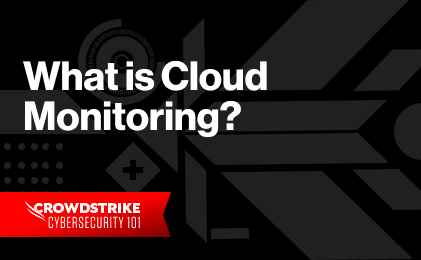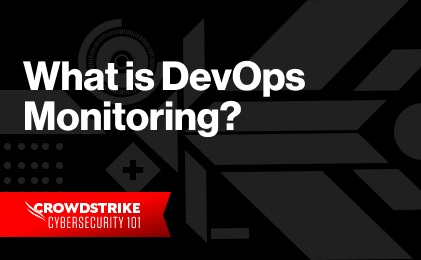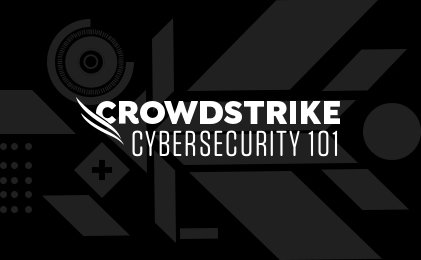Modern trends in application development can add significant value to your IT investments. The speed, efficiency, and elastic nature of cloud infrastructure, the distributed nature of microservices, and the ever-changing ways of rapid deployment are among many game-changing innovations. But each step forward can also introduce greater complexity to your IT footprint, affecting their ongoing administration.
For example, suppose you’re running a multi-tier web and mobile application with many moving parts. In that case, you probably already know that the detailed visibility of the health of each component and operation is paramount. You can collect logs from each element, and a centralized log monitoring system can leverage all the information to show you the status of your services. However, not everyone necessarily grasps how much a continuous monitoring solution can add to the picture.
Continuous monitoring is an approach where an organization constantly monitors its IT systems and networks to detect security threats, performance issues, or non-compliance problems in an automated manner. The goal is to identify potential problems and threats in real time to address them quickly.
However, not all businesses implement continuous monitoring or know how to implement it. Most companies use data to power their decision-making, but this is not necessarily continuous monitoring.
In this article, we will cover the various types of continuous monitoring, the benefits it delivers, and some best practices for successfully building a continuous monitoring regimen.
Continuous Monitoring Types
The scope of continuous monitoring involves three primary domains.
- The application layer of continuous monitoring measures application performance. These applications can be custom-built by your business or third-party software. You will want to track metrics like transaction and errors per second, system uptime, and availability for application monitoring. Such tracking can help you quickly identify software bugs, performance bottlenecks, and overall user experience.
- Infrastructure monitoring is the next layer and covers the compute, storage, network, and other physical devices found in traditional data centers or their virtual equivalents within cloud platforms. Monitoring this domain allows IT teams to troubleshoot performance issues, optimize usage, reduce cost, and forecast capacity needs.
- Network monitoring can help you understand the status of your firewalls, switches, routers, and other devices as the network evolves. You’ll capture the source and destination IP addresses, ports, and protocol metadata of your network traffic and use those to find bandwidth utilization, packet losses, delays, and potential malicious intrusion attempts.
Continuous monitoring can use logs, metrics, traces, and events as its data sources for each domain. In this article, we will specifically focus on continuous monitoring through logs.
Benefits of Continuous Monitoring
The value that continuous monitoring brings to your IT operations is greater visibility, which can lead to accelerated and more targeted incident responses. The sooner you spot errors, the earlier you can begin the root cause analysis and the subsequent remediation process. In other words, you are lowering the mean-time-to-resolution (MTTR).
This also means you can send automated alerts to the appropriate IT teams so they can immediately address any pressing issues. You can also integrate automation tools like runbooks with these alerts to apply fixes and solve the problem without any human intervention. For the IT system’s clients, the whole experience is transparent due to such a proactive approach.
For example, a continuous monitoring tool can generate an alert about the free storage space of a particular server dropping below a preset threshold. As a result, an automated SMS text message could be sent to the infrastructure team, prompting them to increase the server’s capacity or add extra space to the disk volume. Similarly, a “multiple failed login attempts” event can trigger a network configuration change blocking the offending IP address and alerting the SecOps team.
Smart use of logs for continuous monitoring can greatly reduce the risk of cyberattacks. Mining historical system logs allows you to create performance, security, and user behavior benchmarks. Once you know how things should work, you’ll be better positioned to recognize anomalies from current log events.
Leveraging logs also allows you to correlate authentication and network events (and compare those to benchmarks) and spot suspicious activities like brute force attacks, password spraying, SQL injection, or data exfiltration. For example, the network logs may highlight unusually large files moving out of your network, while authentication logs could match that activity to a specific user on a particular machine.
This level of intelligence can also be used for user behavior analysis and real-time user experience monitoring. For example, the response times from a web server access log can show the normal behavior for a particular landing page. Sudden slowness in this user experience metric can indicate heavy seasonal traffic — and therefore, the need to scale up resources—or even a possible DDoS attack.
Continuous Monitoring Implementation Best Practices
You can adopt good practices to set up long-term, sustainable continuous monitoring solutions.
First, your monitoring profile should align with your organizational and technical constraints. Although it’s tempting to include all systems in your continuous monitoring regimen, doing so can be unnecessarily cost-prohibitive and complex. Consuming valuable network bandwidth, storage capacity, and processing power if you don’t pick your targets carefully.
To do this, you’ll need to know your IT environment well and understand the practical needs and cost limits. Consulting closely with all relevant teams’ stakeholders will help you understand their needs and expectations. The goal is to eliminate any possibility of a critical yet unmonitored system going offline. But there should also be no surprises when an unexpected tech bill reaches the accounting team.
After identifying the most critical systems, the monitoring scope should identify and include the most important metrics and events. For example, you may prioritize application errors or include performance-related events and metrics. You may have to decide between capturing firewall configuration change events or blocked traffic details. Similarly, you may need to find what capacity-related problems on your servers are most critical.
Once you have a profile of what you want to monitor, you need to decide how to monitor them. When choosing a monitoring software, you need to consider your business and technology needs and your allowed budget. To get the maximum value from your investment, you’ll want a system that fits your existing and most, if not all, of your predicted environment. That means:
- The continuous monitoring solution will need to work with the application stacks identified in the initial fact-finding phase. The stacks will include all the software components, infrastructure, and network elements.
- The logs, metrics, events, and traces from each integration point of the stacks should be easily ingestible to the solution.
- The solution should be able to ingest, store, and process the volume of data captured over time.
- The data captured from the target systems will be encrypted in transit and at rest. Also, any sensitive information will be masked where necessary.
- The collected data must be hosted in specific geographic regions when industry regulations require it.
- You should be able to search, analyze, and visualize the monitored data.
- Different events and metrics from the same application stack touchpoints should be correlatable.
- You should be able to see trends, anomalies, and comparisons and set up alerts across various communication channels.
- The licensing model should be flexible, and you should be able to get the support you need when you need it.
Finally, keep in mind that continuous monitoring isn’t about “set and forget.” Expect and plan for an ongoing, iterative adoption process extending through the entire product lifecycle. This is because, over time, you’ll need to:
- Integrate new systems to the continuous monitoring regimen.
- Engage with all relevant teams to ensure the monitoring is benefiting them.
- Upgrade and modify source systems to better integrate with the solution.
Discover the world’s leading AI-native platform for next-gen SIEM and log management
Elevate your cybersecurity with the CrowdStrike Falcon® platform, the premier AI-native platform for SIEM and log management. Experience security logging at a petabyte scale, choosing between cloud-native or self-hosted deployment options. Log your data with a powerful, index-free architecture, without bottlenecks, allowing threat hunting with over 1 PB of data ingestion per day. Ensure real-time search capabilities to outpace adversaries, achieving sub-second latency for complex queries. Benefit from 360-degree visibility, consolidating data to break down silos and enabling security, IT, and DevOps teams to hunt threats, monitor performance, and ensure compliance seamlessly across 3 billion events in less than 1 second.


